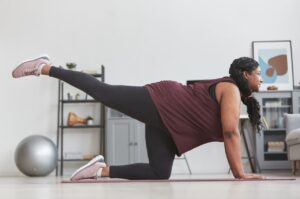
Frozen shoulder (adhesive capsulitis) limits range of motion and disrupts daily activities. Physiotherapy interventions aim to reduce pain, restore joint mobility, and rebuild functional strength to support lasting shoulder health.
In this guide, we detail five progressive strategies—pain-relief mobilizations, graded stretching routines, targeted strengthening, functional integration drills, and activity modification—for effective frozen shoulder rehabilitation.
Why early intervention matters
Delaying treatment can lead to prolonged stiffness and compensatory movement faults in the neck, scapula, and trunk. Timely physiotherapy prevents maladaptive patterns and accelerates recovery.
Strategy 1 – Pain‑relief mobilizations
Gentle joint mobilizations (grades I–II) alleviate discomfort and stimulate synovial fluid movement. Manual rhythmic oscillations decrease pain signals while preserving tissue integrity.
Strategy 2 – Graded stretching routines
Controlled passive and active-assisted stretches target the glenohumeral capsule. Techniques such as cross-body adduction and wand-assisted flexion progress gradually to improve flexibility without provoking pain.
Strategy 3 – Targeted strengthening
Isometric holds and light-resistance exercises (e.g., submaximal external rotations, scapular retractions) rebuild muscle support. Reinforcing the rotator cuff and periscapular muscles stabilizes the shoulder joint.
Strategy 4 – Functional integration drills
Incorporate reaching, lifting, and weight-bearing tasks that mimic daily activities. Guided drills—such as wall slides and table-top push-ups—reinforce mobility gains within functional contexts.
Strategy 5 – Activity modification
Educate on ergonomic adjustments and movement pacing to protect the healing shoulder. Recommendations include avoiding overhead tasks and using modified grip patterns to minimize joint stress.
Integrating these strategies into your routine
- Assessment: Begin with a physiotherapy evaluation to determine the stage of adhesive capsulitis.
- Mobilization & stretch: Alternate sessions for pain relief and capsule stretching.
- Strength work: Add targeted isometrics and light resistance 3–4 times/week.
- Functional tasks: Practice integration drills daily within tolerance.
- Lifestyle cues: Implement movement modifications in everyday activities.
Following this structured approach helps you reclaim shoulder range of motion, reduce pain, and build a resilient shoulder foundation for long-term mobility.














